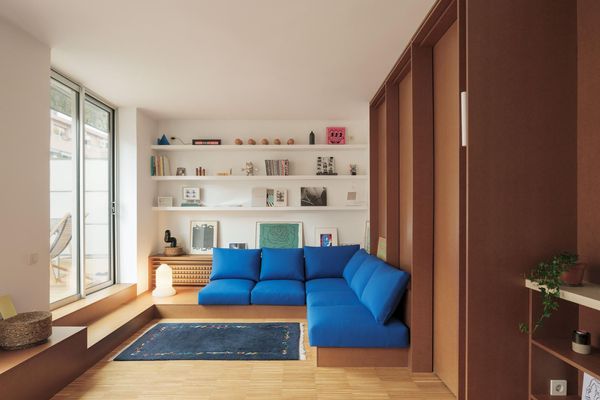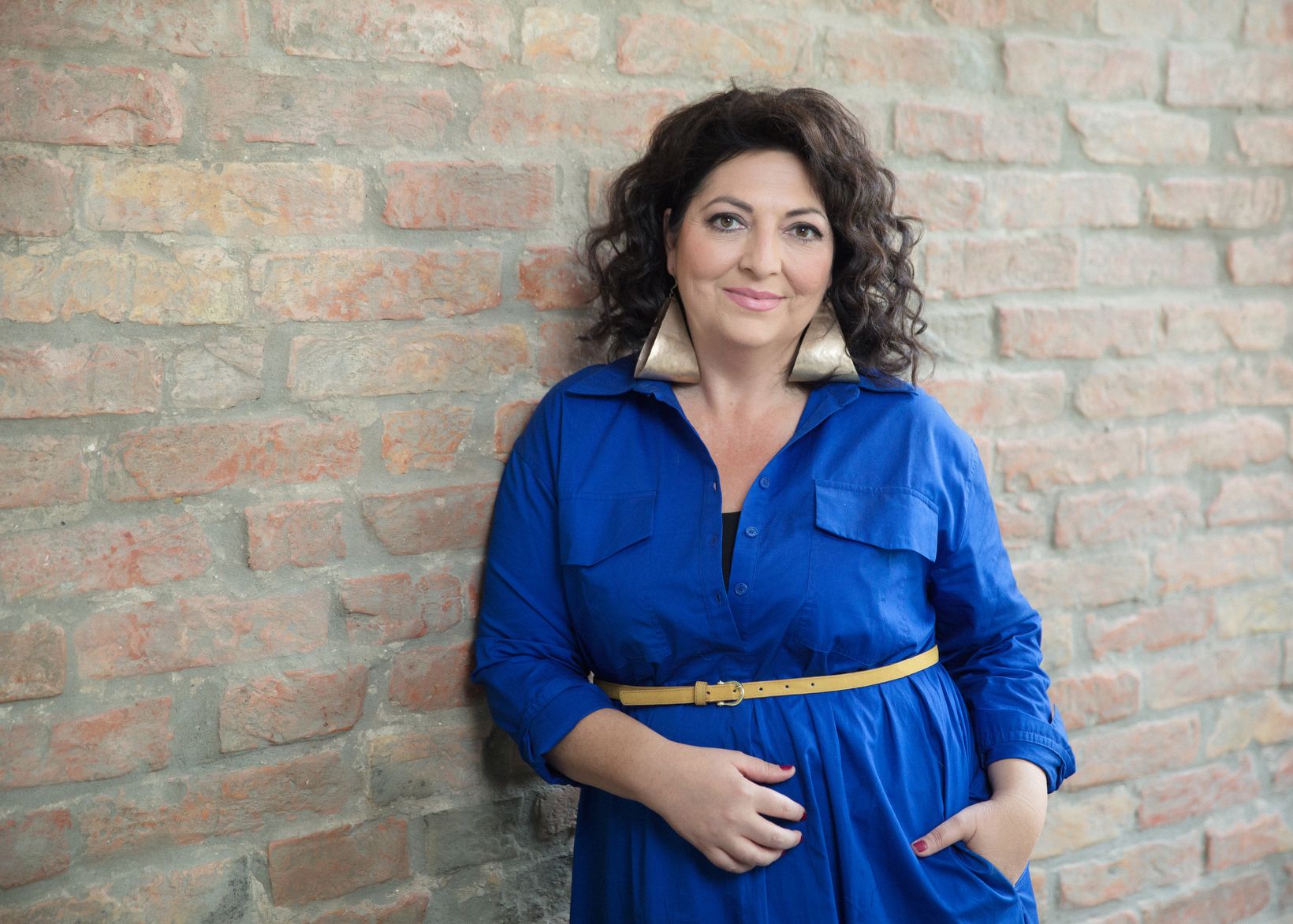Thanks to her, a whole country learned to make Indian lentil stew in the oven. Of course, we can’t thank Zsófi Mautner only for the dal makhani recipe. The gastronomy blogger, who used to work as a diplomat for many years, always puts something exciting on the table, making sure that there is a little twist in it that even the Hungarian stomach can handle. It is not surprising, then, that most of Zsófi’s favorite objects can be connected to the kitchen, but it is true that when it comes to clothes or fashion accessories, she is still happy to choose from a Hungarian designer. Let’s see what precious items the founder of Chili & Vanilia keeps with herself.
Do you consider yourself an object-collector type, or rather a minimalist?
Basically, I’m not a collector type: I get rid of objects relatively easily during a big clean-up every few years. There are certain life situations, locations, or activities, in case of which I like to hold on to objects. Kitchen and cooking is an area where I really have a lot of pieces that I have some personal attachment to—it can even be a small plastic object that is thought to be completely worthless.
It was just days ago that the zucchini corer I bought in Beirut in the fall of 2018, fell into my hands. My friend and I led our way to one of the side streets of the tiny market in the Armenian quarter there, where we ended up in a very crowded shop—that’s where I saw this zucchini corer. There was also a cute old man sitting there, whose daughter noticed that we spoke Hungarian and told us that she had just been to Sárvár. Thanks to this tiny kitchen utensil, a very strong emotional shell, a relationship with these people, developed there in that little “capsule”. When I get this zucchini corer in my hand, I always remember this scene.
Do you have a special item in your possession that you would never get rid of? Tell us about it!
There are several such items, and these, too, are mostly tied to my kitchen, as I spend ninety percent of my life there. If I had to choose a single one, I would pick that orange cast iron pan—I cook almost everything in it. That particular New Year’s Eve lentils are also made in this. By the way, every little knickknack from my grandparents’ house in Kunmadaras is such that I would never get rid of them.
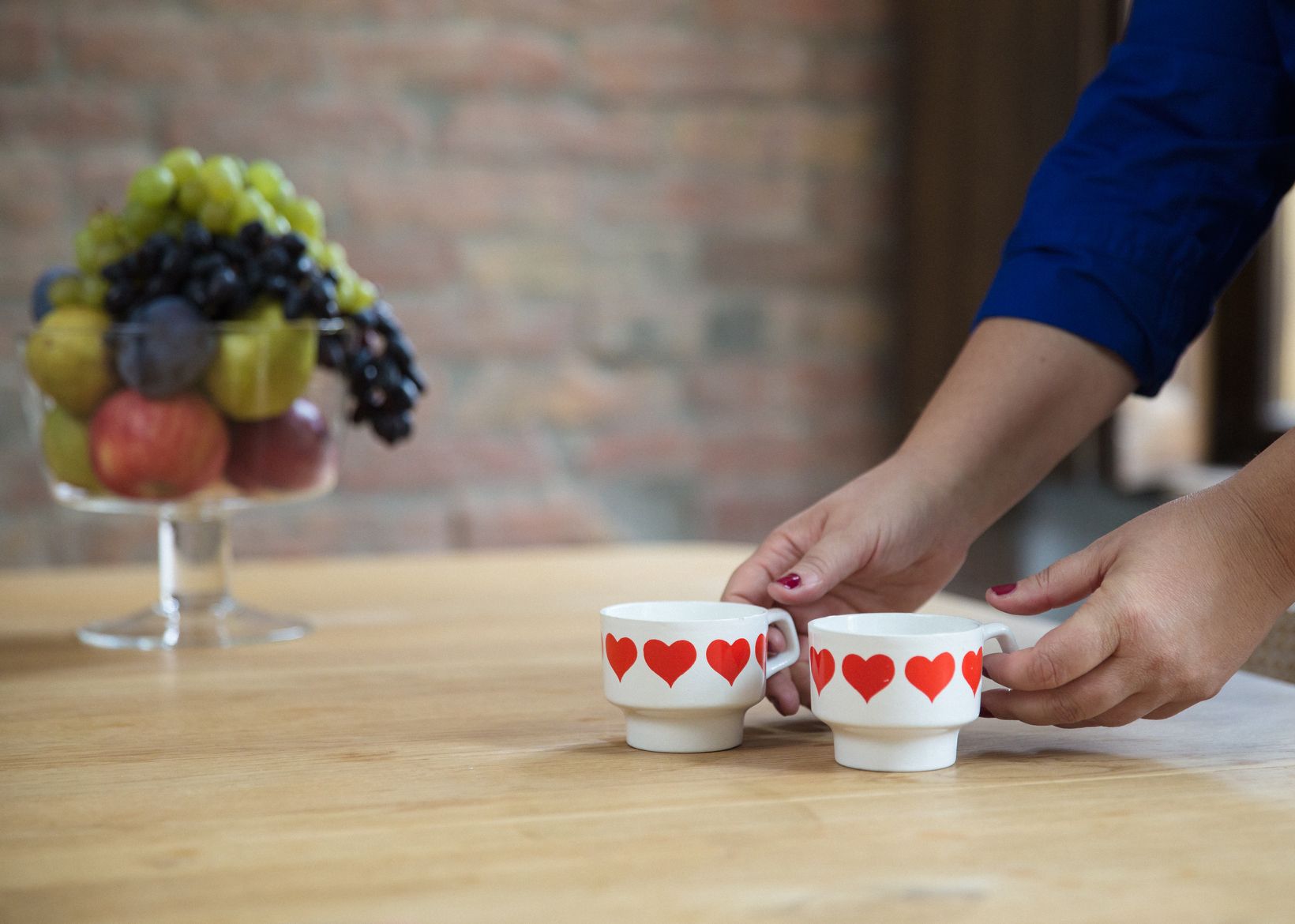
These granite cups are very important personal items for me, as the rooster-patterned tablecloth: they come from my grandparents’ house. In fact, I can also say that I am almost commuting between Kunmadaras and Budapest, and there, I consciously use that place to slow down a bit. We kept everything in the house that my grandparents once used. In a village, these objects symbolize something very different than in the city: here in Budapest, I never feel the deep meaning of the objects. And in the countryside, I feel that there, these pieces will not just simply decay, but they will really live on, even for centuries. An old spiral pasta maker or a checkered recipe book is passed from mother to daughter, and this legacy puts a lot in the item.

What is the object (or objects) that is always with you and without which you will not leave home?
Without my notebooks, there are several types. Plus, I have all the red Moleskine planners I’ve used, dating back to ten to fifteen years. This has recently been expanded with a small red Moleskine notebook because I’m a terrible list maniac and I have a third one, which I just got in Krakow, the cover made by a Polish illustrator: from recipes, through plate designs, all sorts of ideas will be included in this.
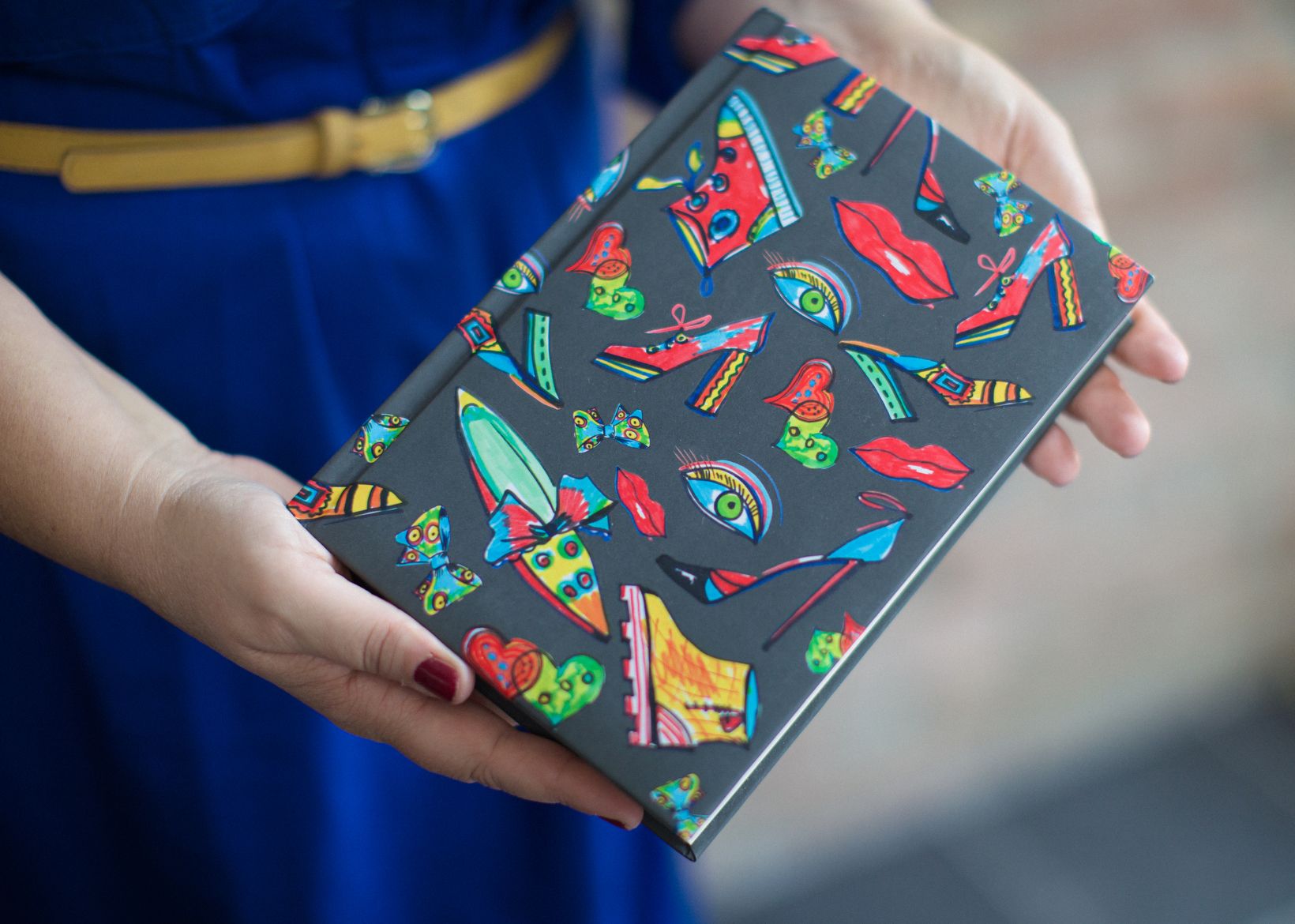
When I was still a diplomat in Brussels, I really enjoyed going to the flea market on the weekends. There I got hold of this tiny little metal jar that was originally used to store medicines. However, I turned this box into a mobile spice rack—I come and go a lot, and since spices are a defining part of my kitchen (my blog isn’t accidentally called chili and vanilla either), it’s a perfect solution to take as much of my favorite spices with me when I travel as should be enough to make one portion of food. Thanks to this object, I never get embarrassed: I always have a little Maldon salt or a pinch of saffron or Roman cumin.
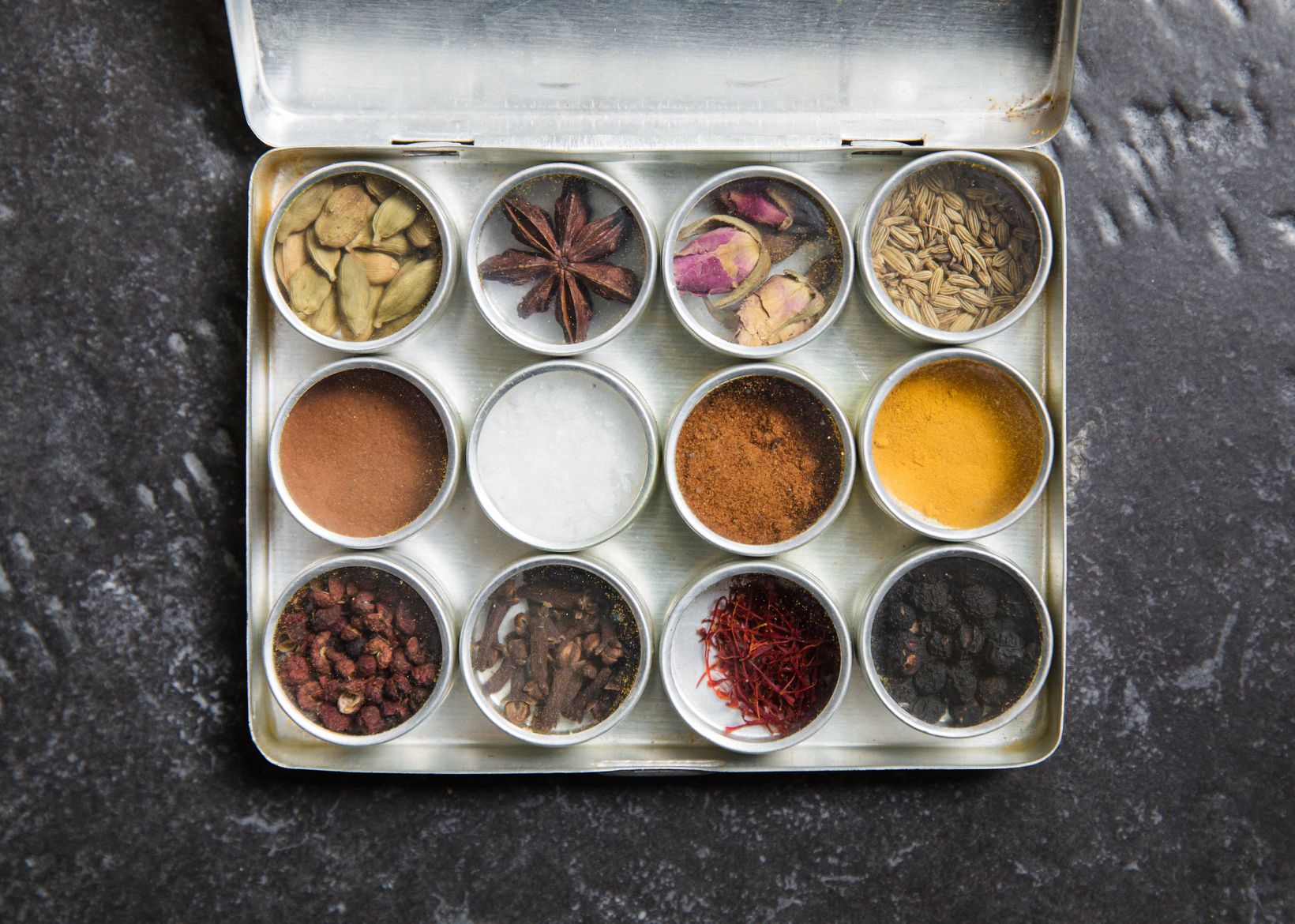

Obviously, I don’t take it with me, but the Brigi Konda ceramics are very defining elements of my kitchen: I’m a big fan of Brigi, I bought a lot of plates from her, and I use them in everyday life as well. These objects also have a kind of symbolic meaning for me because they represent the development we have experienced in gastronomy over the past fifteen years. Today, it is customary for chefs or even housewives to use Hungarian ceramic tableware in a restaurant or at an event—and this is an important mission for me as well. Such pottery can even serve as an inspiration for cooking: I don’t always choose the plate for the food, but it also happens that a plate inspires the food. One of my Kondabrigi plates looks like a soft-boiled egg splattered on it—I really like that it’s so playful.
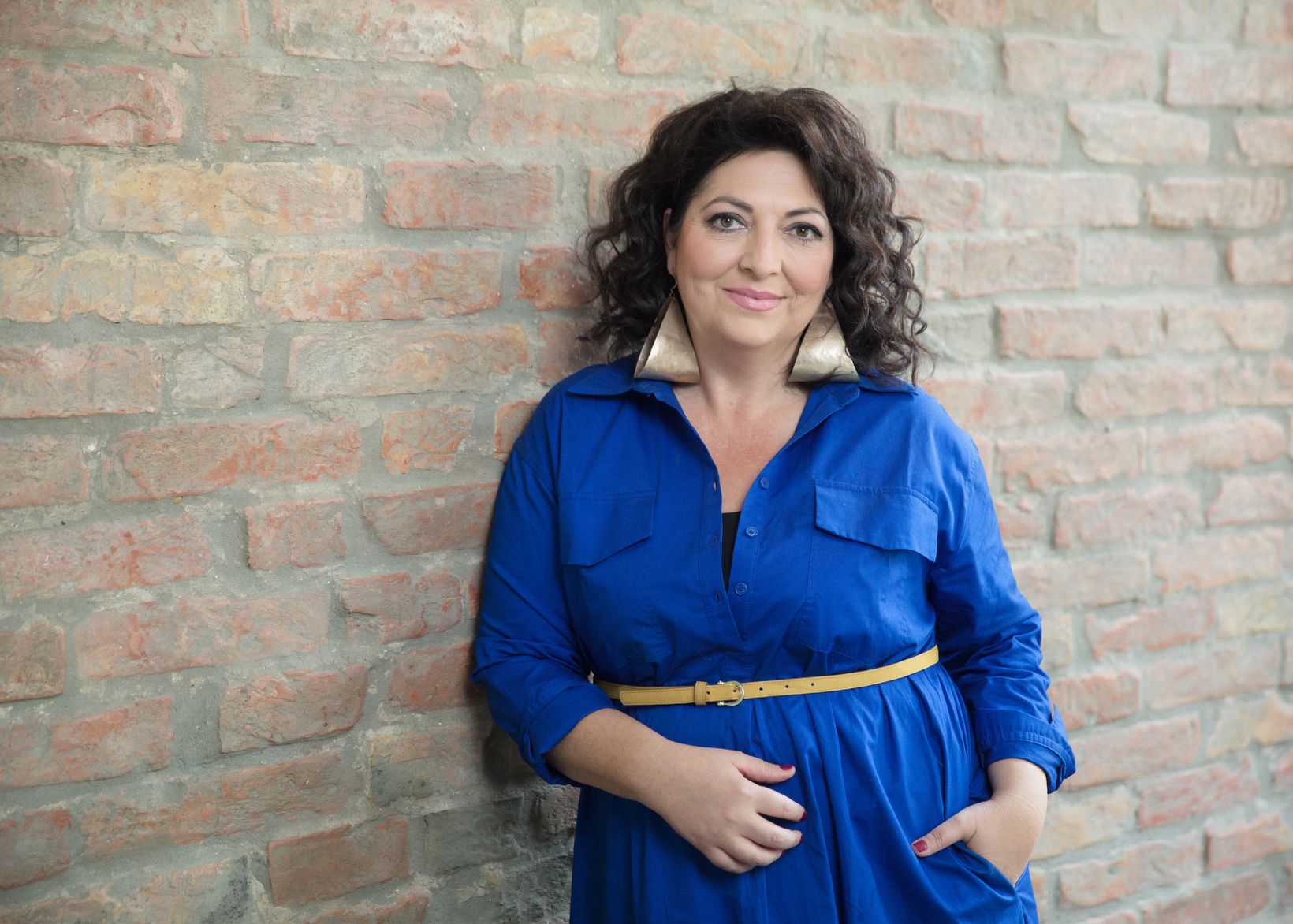
I really like to wear huge earrings and I like to choose from a Hungarian designer. I’ve been a fan of the Eva Remenyi brand for years—one of my favorites is this gigantic, cowbell-like earring. My other favorite is a Romani Design piece of jewelry that they named a fülhidea (ear orchid)—I have been working with Erika and Helena (Erika Varga and Helena Varga, the founders of the brand—the Ed.) for years and I appreciate their work. I also have clothes from them, I often wear them very consciously at events abroad. My third favorite is the Folenta Design & Jewellery, whose characteristically Hungarian jewelry decorated with matyo embroidery I also really love. However, I always make sure there is contrast, a balance: I usually combine these extra pieces with single-color, modern clothes.
If you could save an object in a time capsule for the next generation, what would it be?
Unfortunately, no matter how much we hate gadgets, the smartphone is a real imprint of this century. It was the development of digital technology that gave birth to the profession I am in now. Therefore, it is not just a functional object for me but also a kind of symbol of my whole career change, actually. There are thousands of recipes, food photos in one device.
Photos: Balázs Mohai
Chili & Vanilia | Web | Facebook | Instagram

Poland, the digital superpower

HIGHLIGHTS | When water cries for an object
